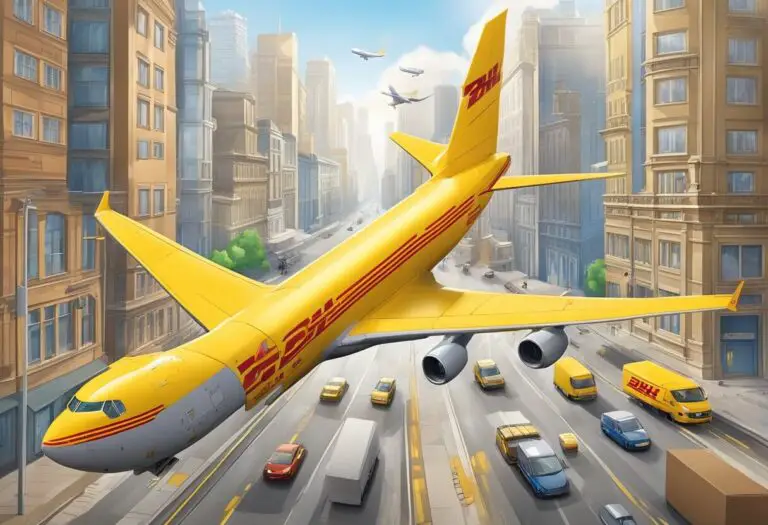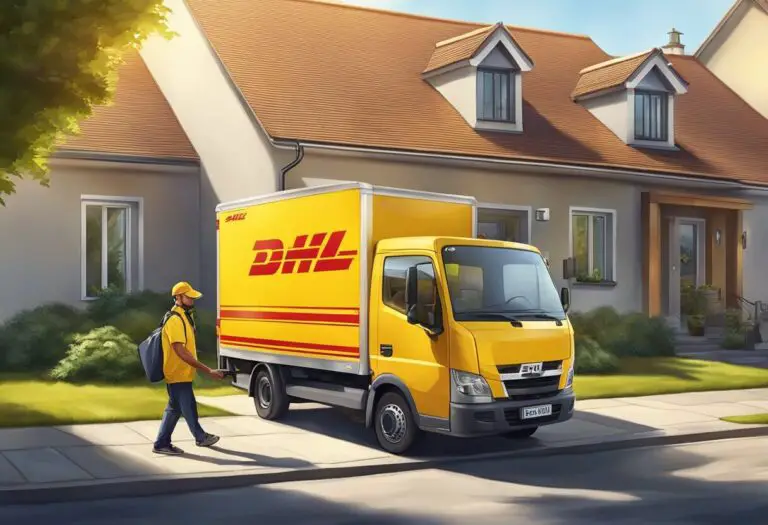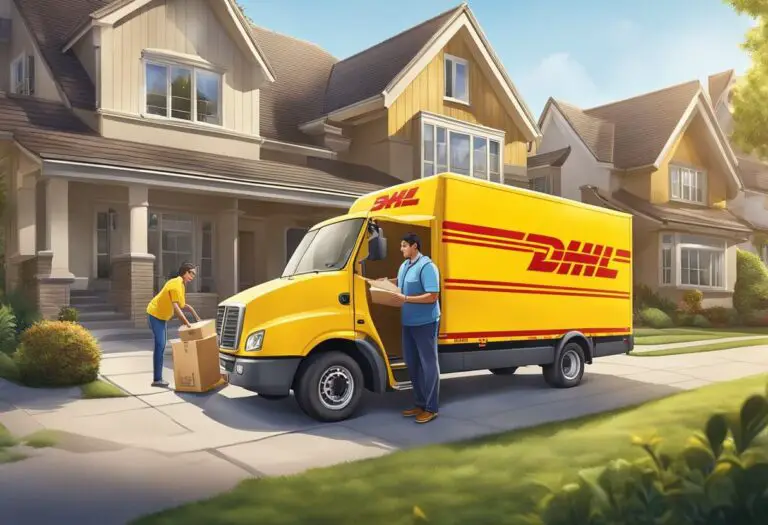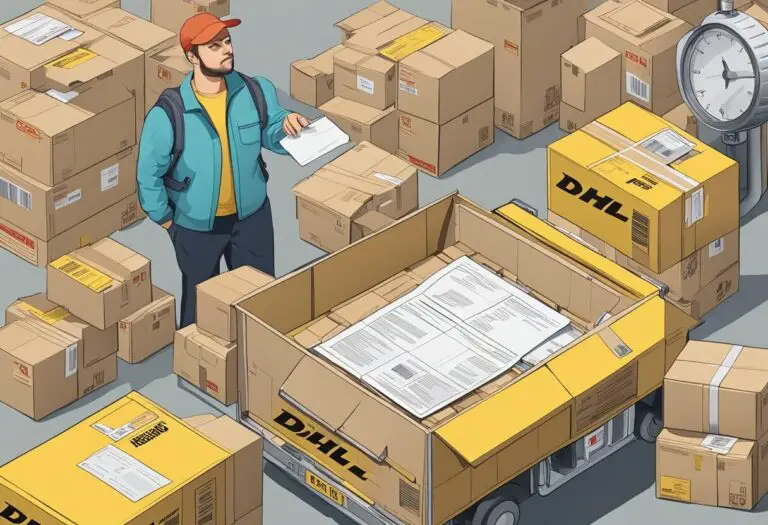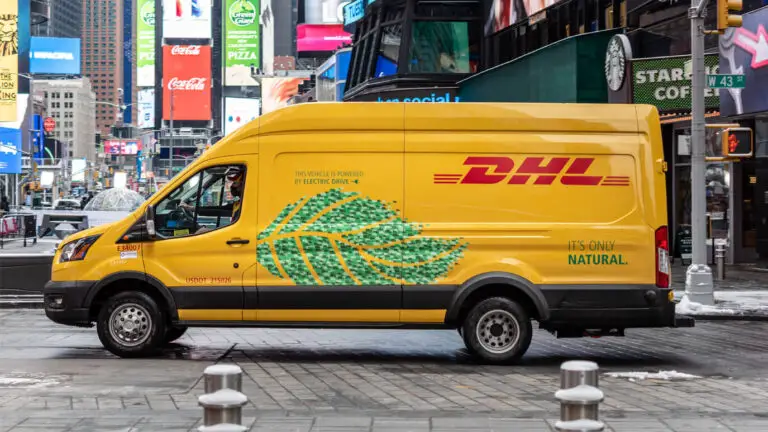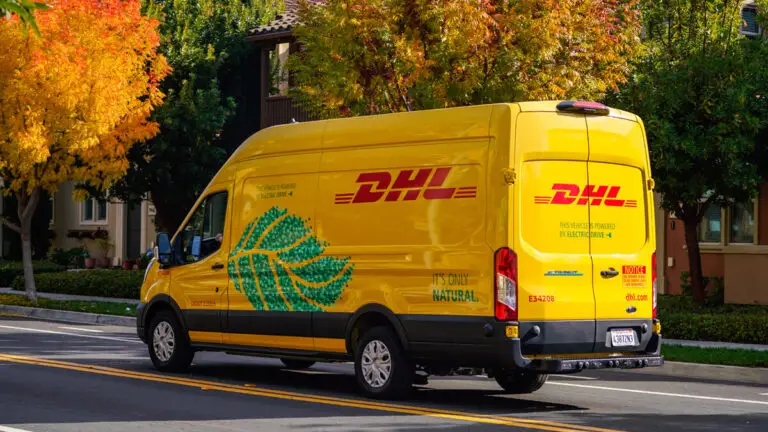What Is DHL Mean? Uncovering Surprising Facts
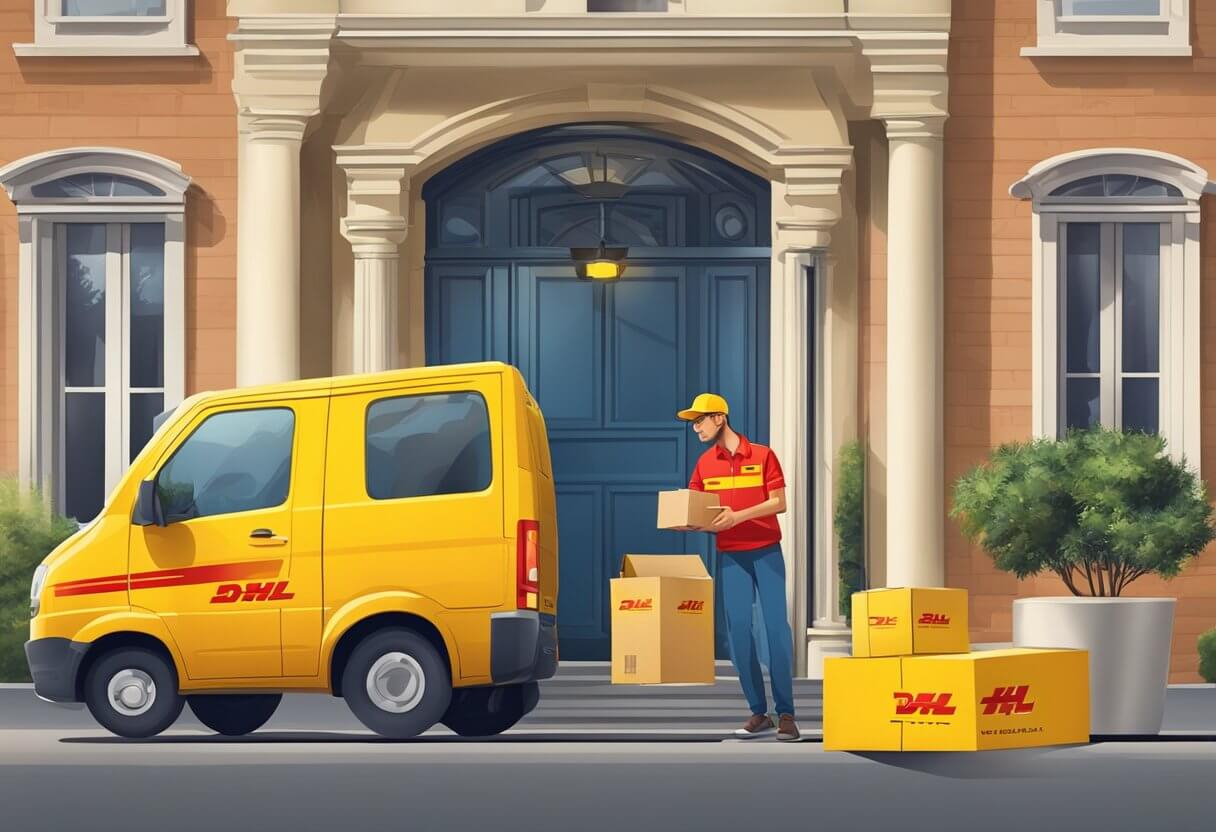
Have you ever received a package delivered by DHL Express? Those bright red and yellow trucks are a common sight in over 220 countries around the world. But what does the name DHL actually stand for and how did they become so ubiquitous?
In short, DHL stands for Dalsey, Hillblom and Lynn – the surnames of the company’s three American founders back in 1969. From humble beginnings as a document courier firm shuttling between San Francisco and Honolulu, DHL rapidly expanded into international delivery and freight transport. Today, they handle over 1.8 billion shipments per year!
This article will dive deep into the origins, history, services and inner workings of DHL to uncover how three entrepreneurs built it into a global delivery empire. We’ll explore questions like:
- What do the letters D-H-L really mean?
- How did a startup courier service grow so large?
- What shipping solutions does DHL offer today?
- How does DHL transport so many worldwide parcels?
Grab your tracking number and let’s get started on this ultimate guide to understanding DHL!
Decoding the DHL Acronym
First things first – what exactly does DHL stand for? It’s actually an abbreviation using the initials of the last names of the company’s three founding partners back in 1969:
- Dalsey
- Hillblom
- Lynn
Adrian Dalsey, Larry Hillblom, and Robert Lynn combined the first letters of their surnames when naming their startup courier service. The company began shipping documents between San Francisco and Honolulu as an air freight forwarder.
Their new DHL moniker and emphasis on speedy delivery proved popular – domestic expansion started just a few years later. The DHL name has stuck ever since, despite ownership changes.
So while it may seem random at first glance, the name DHL has origins tied directly to those who started it all!
Charting DHL’s Rapid Growth Into An International Behemoth
DHL certainly didn’t rest on its laurels after those early days shuttling packages between Pacific islands and California. Major worldwide expansion kicked off through the 1970s and 1980s. By the late 1970s DHL already offered broad delivery services reaching countless destinations.
The success of competitor FedEx entering domestic parcel delivery motivated DHL to expand its own US operations starting in 1983. Prior to that point, DHL focused mainly on international and intercontinental deliveries.
Further milestones in DHL’s rapid ascent included:
- 1985 – Expanded into Europe
- 1986 – First package delivery firm in China
- Early 1990s – Over 240,000 shipments daily!
- 2002 – Deutsche Post acquires full ownership
The takeover by German logistics giant Deutsche Post began in 1998 when it purchased a minority share. By December 2002 it controlled 100% of the company.
The Deutsche Post purchase led DHL to prioritize integration with its new parent company. DB Schenker, Deutsche Post’s large freight division, took over various air and ocean freight solutions previously under the DHL brand.
Most notably, DHL became the backbone of Deutsche Post’s new Express division. That unit leads in international courier, package, and document shipping – DHL’s original specialty.
So in many respects, the DHL name simply attached itself to a larger global organization. But it still stands tall as the brand behind Deutsche Post’s worldwide express shipping operations.
An Empire Built on Logistics: DHL By the Numbers
DHL handles massive shipping volumes thanks to its well-developed infrastructure and logistics capabilities. Let’s crunch some statistics that reveal the immense size of its operations:
- 1.8 billion shipments delivered annually
- Services reaching 220 countries and territories
- Over 586,404 employees worldwide
- Hubs and warehouses totaling 1,400 facilities globally
- Fleet of 300 cargo aircraft flying daily
- Additional 21 cargo planes coming soon
Of course, becoming a delivery juggernaut on this scale doesn’t happen overnight. DHL invested decades into expanding its transportation networks across land, air, and sea to reach virtually all corners of the world.
Its expertise across supply chains allows movement of customer freight seamlessly across borders. DHL meets short deadlines for express mail as routinely as it ships bulk cargo loads internationally.
Simply put – coordinated logistics on a global scale gives DHL infrastructure to handle high parcel volumes.
What Shipping Solutions Does DHL Offer?
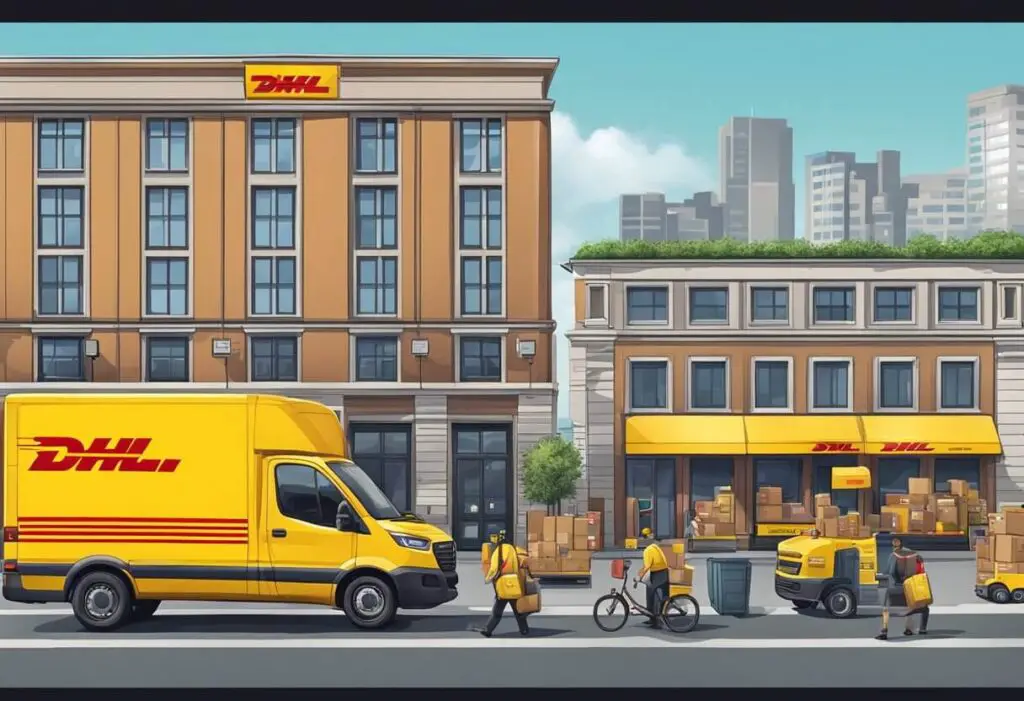
DHL built an extensive portfolio of both transportation and supply chain management solutions since its early days providing air freight and document delivery. Its offerings today feature notable breadth and depth catering to all sorts of logistics needs:
DHL Express
DHL’s flagship courier and small package delivery wing that originally put it on the map. Time-sensitive parcel shipping with optional tracking.
DHL Parcel
Affordable delivery tailored for higher-volume eCommerce shippers in Europe chiefly. Leverages partnerships with local postal networks.
DHL Global Forwarding
Air, ocean, and road freight solutions spanning FCL, LCL, and consolidated options. Plus trade advisory services for logistics management.
DHL Supply Chain
Outsourced supply chain solutions like warehousing and fulfillment to improve clients’ distribution networks and inventory control.
DHL eCommerce Solutions
Facilitates domestic and cross-border eCommerce delivery by centralizing order processing on easy-to-use platforms.
This diverse selection of parcel, freight, and logistics products stems from DHL actively expanding its service portfolio over 50+ years in operation. It evolved from a niche courier to comprehensive supply chain orchestrator.
Customers now rely on DHL for reliable movement of all types of cargo to and from any global location. Its logistics technology also provides shipment visibility and tracking.
The Inner Workings: How DHL Ships So Many Parcels
DHL’s enormous sorting facilities, vast aircraft fleet, synchronized scheduling, and advanced tracking systems drive its worldwide delivery volumes. Let’s analyze the operational backbone enabling this:
Global Transportation Networks
DHL’s huge air and ground delivery networks funnel parcels between regional sortation hubs. This connects destinations across vast distances through established transit routes.
Shipments rarely travel directly from origin to destination in one flight. Instead, parcels route through logistics hubs like Cincinnati, Leipzig, and Hong Kong. Constant sorting and transferring between planes, vehicles, and facilities speeds transit.
So someone in San Francisco sending a package to Tokyo will see it tendered to DHL, flown to a regional US hub, transferred to another aircraft destined for Asia, then a final leg to Tokyo.
Advanced Hub-and-Spoke Logistics
Strategic logistics hubs operated by DHL minimize transit times over long distances. Packages focus to key airports and sorting centers along high-density shipping lanes.
Consolidating parcels traveling similar directions prevents inefficient point-to-point trips. It also fills delivery vehicles and planes to maximum capacity.
DHL selects hub locations based on proximity to origins and destinations with the highest shipping demand like trade lanes between Asia, Europe, and North America.
Reliable Parcel Tracking Systems
Tracking numbers assigned to each package allow shippers to monitor its progress through each leg of delivery. Scanning parcels at facilities and during transit generates detailed tracking event timelines.
DHL developed dependable logistics management tech to coordinate huge volumes. Barcodes and automatic sorting keeps parcels flowing smoothly. Inventory is tracked as cargo gets scanned and loaded onto successive transport legs.
Customers like having shipment visibility rather than blindly waiting. DHL made parcel tracking standard across its express shipping. This reliable system facilitates delivery of over a billion parcels.
Why DHL Stands Out As A Global Delivery Leader
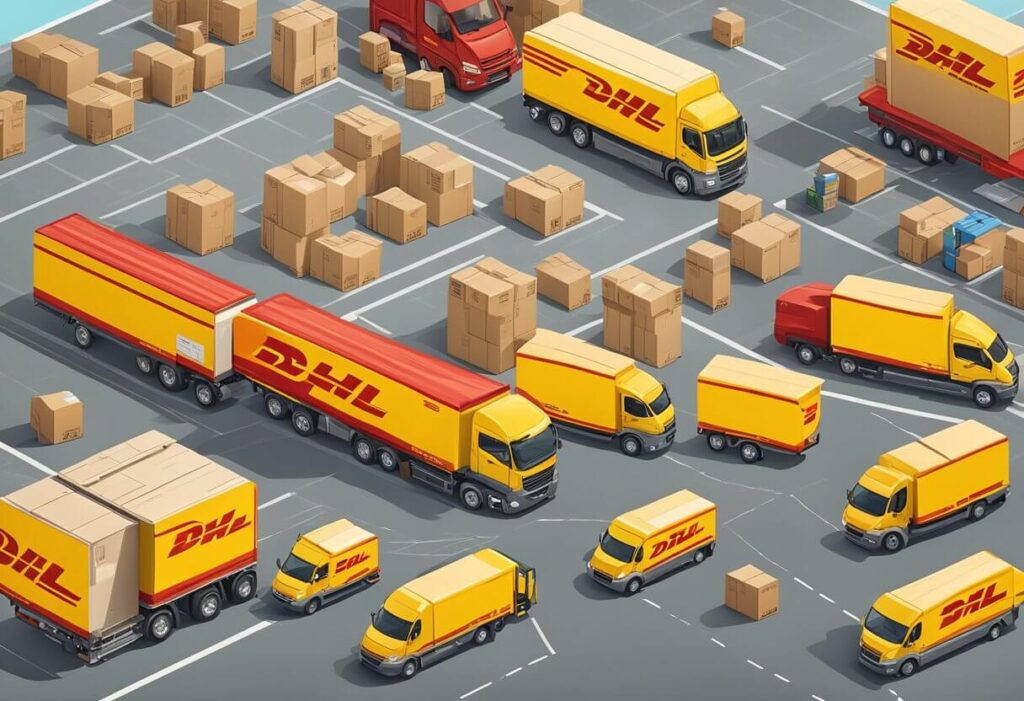
DHL earned its place as an industry-leading courier thanks to key advantages like:
- 50+ years of logistics experience providing reliable global delivery
- Worldwide infrastructure with facilities, vehicles, and aircraft facilitating transport
- Advanced tracking technology for shipment visibility and coordinated logistics
- Diverse service portfolio that evolves along with customer shipping needs
- Hub locations optimized for major trade lanes and parcel volumes
Finding a provider that checks all those boxes is no easy feat. DHL leverages its size, history, and strategic presence spanning continents to maintain dominance.
No competitor currently has infrastructure on the same scale. Very few can match the breadth of DHL’s supply chain capabilities either. Its first-mover advantage as an air freight pioneer laid the foundations central to outcompeting newer entrants.
In essence, DHL sits miles ahead thanks to diligently building one of the industry’s most impressive worldwide shipping networks over decades. Competitors must play catch up if they desire matching that level of global parcel delivery access and quality.
Delivering Billions of Parcels Starts With Three Entrepreneurs
DHL certainly holds market share today vastly beyond what its founders likely imagined back in 1969. Yet the company DNA remains tied to swiftly transporting important documents and parcels worldwide. Adrian Dalsey, Larry Hillblom, and Robert Lynn built the foundation for all future success.
What started as a San Francisco to Honolulu courier operation now delivers over a billion parcels annually across every continent. DHL even ships to remote islands and warzones!
The DHL brand continues speeding packages to 220 countries daily thanks to strategic international growth ever since acquiring its first aircraft decades ago. Its global network transports time-sensitive documents and freight for all sorts of customers.
So next time you see a DHL van or plane shuttling to its next destination, remember it traces back to three ambitious entrepreneurs. They teamed up to launch an overnight air delivery company for Hawaii in 1969. The rest is, as they say, history!
Final Thoughts on DHL and What Its Name Represents
DHL certainly holds strong brand awareness in the delivery sector despite most customers knowing little about the company. Digging into its nearly 50+ year history reveals an organization repeatedly escaping complacency.
DHL started strong by rapidly expanding worldwide in its early years. Strategic pivots into ground transport and supply chain solutions opened new profit centers over time.
The company characteristically maintained a spirit of evolution from humble beginnings as a Hawaii air courier toward the integrated global logistics titan seen today. That willingness to adapt positions it well for continued success.
At the end of the day DHL simply represents reliable logistics – no matter the location or cargo. The company leverages its size and global infrastructure to meet all sorts of unique shipping needs. Speed remains an emphasis just like when Dalsey, Hillblom and Lynn raced to airport cargo depots to dispatch time-sensitive documents in the middle of the night nearly 50 years ago!
So next time you receive a DHL delivery, take a moment reflecting on the rich history behind that branded packaging. An entire operation with hundreds of thousands of employees connects to deliver it solely because three ambitious entrepreneurs saw better ways to move cargo between Pacific islands back in 1969!

